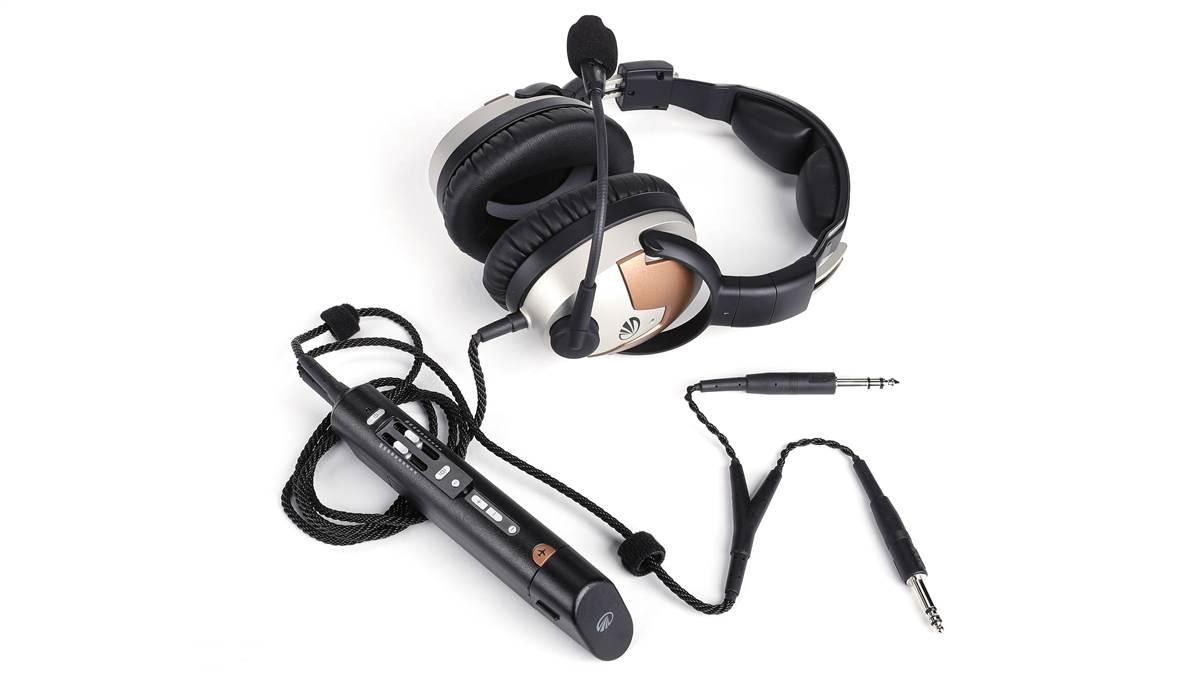Safety tool
Lightspeed Delta Zulu review

Lightspeed calls its Delta Zulu a “safety wearable,” yet it’s also a full-featured, high-end, active noise reduction headset with many innovations. It’s got a rechargeable lithium-ion battery that can power the headset for 30 hours at a time, plus a AA-battery powerpack good for an additional 15 to 20 hours. Bluetooth for music and phone calls is a given these days, and it can record hours of audio via a Lightspeed smartphone app.
Carbon monoxide levels also are recorded via the app, and they’re enlightening. Several of the airplanes I fly showed significant CO levels on the ground that went away in flight.
A key Delta Zulu feature is its proprietary “EQity” hearing test which customizes the sound coming through the speakers for each user. The test is like a visit to an audiologist. The headset goes through a range of frequencies measuring how well you hear each one. Thanks to aging, too many rock concerts, and too many MU2s and jets, I’ve got substantial high-frequency hearing loss. But the Delta Zulu tailors its sound for those deficiencies.
I wore the Delta Zulu in an Aviat Husky A-1C, Beechcraft Bonanza A36, Extra 300L, and Van’s Aircraft RV–4. The comfort was excellent in all cases, and the noise canceling was very good although all ANR headsets struggle to overcome the extreme noise and rapid pressure pulses in high-noise airplanes such as the Husky and Extra. The sound and especially the music quality were outstanding in quieter aircraft, particularly the Bonanza.
The Delta Zulu’s weight of nearly 15 ounces is slightly heavier than other high-end ANR headsets such as the Zulu 3 or Bose A20, but clamping pressure seems light, so it was comfortable during lengthy flights. The lithium-ion battery pack is heavier, too, although that’s a tradeoff I’m willing to make for the long battery life.
The Delta Zulu looks stylish with copper-colored metal accents. But I can’t help but chuckle when pilots talk about the “attractiveness” of certain headsets because, to me, big ears and headbands make all of us look slightly absurd. Let’s just embrace our ridiculousness and call it a day.
My gripes with the Delta Zulu are few and minor. The microphone and plug-in cord are on the left side only, and in some aircraft, those would be helpful to have on the right. Also, Delta Zulu uses a UAC charging cord, and for me that means carrying yet another cord on long flying trips (although Lightspeed has an option for USB-A or USB-C charging ports). It sure would be nice to have a common charging port for our phones, watches, iPads, and cameras.
Also, the many accessories that come with the Delta Zulu can be hard to cram into the sturdy carrying case that comes with it.
ANR technology has improved tremendously since Bose pioneered it in the 1980s and introduced the first commercial ANR headset in 1989. Lightspeed encourages comparisons between its products such as the Zulu 3 with the Bose A20 which has long been the leader in high-end aviation headsets.
The Delta Zulu seems on par with the Bose A20 in terms of ANR and sound quality and with one caveat: the Delta Zulu owner user absolutely must perform the Lightspeed EQity hearing test for the headset to work properly. That made all the difference for me.
Price: $1,099
Likes: Rechargeable battery; internal carbon monoxide detector; customizable sound; rugged, braided plug-in cables; long battery life, and industry leading 7-year warranty.
Dislikes: Large battery pack; left-side only microphone; yet another type of recharging cord to bring on road trips, slightly heavier than the competition.
Contact: lightspeedaviation.com



